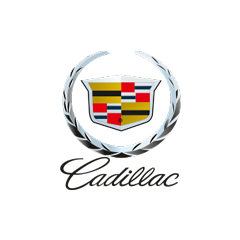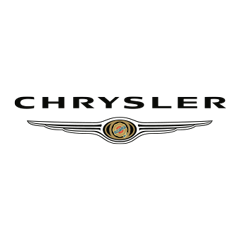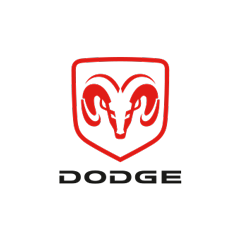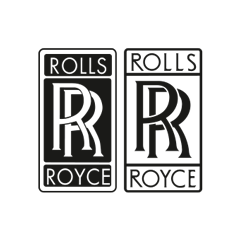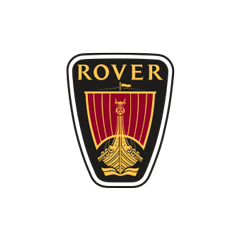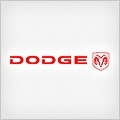
DODGE Challenger
Generations Timeline, Specs and Pictures
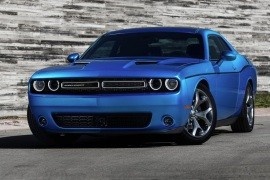
Dodge continued to improve its muscle car coupe with the 2015 model.
The modern iteration of the original 1971 Challenger is a tribute to the era when power and quarter mile runs were the keys to success for performance cars.
The new, facelifted, 2015 Dodge Challenger comes with a big, important improvement on the transmission sector where the older, 5-speed automatic transmission was replaced with a new, 8-speed ZF gearbox. In the engine compartment, there is a V6 and few V8 gasoline engines, with or without a supercharger.
The reintroduction of the Scat Pack with a naturally aspirated 6.4-liter V8 engine offers 485 hp and 644 Nm (475 lb.-ft) of torque. Dodge fans who are looking for the 5.7-liter Hemi engine, that one is offered on the R/T lineup with 375 hp and 556 Nm (410 lb.-ft) of torque. This version can be mated with a choice of two manual 6-speed transmissions or with an 8-speed automatic. If the optional Tremec 6-speed manual is chosen, then you can expect the acceleration from 0 to 60 mph (96 kph) to take less than 5 seconds.
The base engine was the 3.6-liter Pentastar engine, which offered 305 hp. The interior was heavily reworked and more technology was added, with the Uconnect Acces interface.
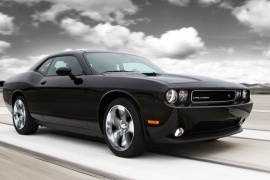
Starting with the 2011, Dodge started to give a mid-life refresh for the Challenger, adding new engines across the lineup as well as new special packs, limited editions and of course, new colors.
The basic SE trim level was renamed to SXT for consistency with the rest of the lineup and was coming with standard 3.6-liter Pentastar V6, dual rear exhausts, five-speed automatic gearbox, Brake Assist, Ready Alert Braking and Rain Brake Support, ESC, Hill Start Assist, Uconnect 130 System with multiple connectivity, premium cloth seats with six-way power driver seat, leather-wrapped steering wheel with shortcut buttons and more.
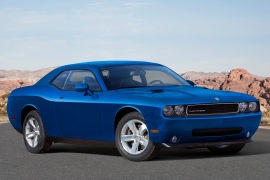
The classic battle of the pony-cars was complete when the Dodge Challenger Coupe appeared on the market to join the battle with Ford Mustang and Chevrolet Camaro.
The retro-design era returned when Ford launched the Mustang and its sales went through the roof. Dodge came with a retro-design for the Charger but they were missing a coupe. So, they took out the Challenger name from the dusted shelf where it sat and revived it with glorious V8 engines under the hood in 2007 as a 2008 model. A year later, a small V6 came along to increase sales.
The retro design on the Challenger was a big hit. Its long hood, short cabin and even shorter rear deck for the trunk were in the right balance for the car dimensions. The four headlights were covered by the front fascia like some side-to-side eyebrows. The side beltline that started from the front was extended to the back, muscular shoulders of the rear fenders.
Inside the cabin, the driver could see the typical four-dials instrument cluster designed in a retro-style. The technological update came into the form of a better sound system. Like the old Challenger, the 2007 model didn’t have any button on the steering-wheel fitted as standard.
Under the hood, there was a 3.5-liter V6 that started the lineup. It was good enough, but it was mated to a standard 4-speed automatic transmission. For manual transmissions and better automatic gearboxes, there were the SRT8 versions and more powerful special models. But, like at the beginning of the pony-car wars, each of them had a base, daily-driver, engine.

It was one of the most important muscle cars of its era, even if, by some standards, it was a pony-car due to its short rear deck.
Its performances made it a tough competitor on drag strips.
The legendary Challenger was introduced in 1969 as a 1970 model year. It was offered in different trims and with various engines. The car was based on the Plymouth Barracuda E-Body platform and shared some components with that one. But it had a very wide range of engines that offered between 105 and 375 hp. Its styling was unique and it was resembled by the third generation of the Challenger, in 2008.
From the outside, the big coupe featured a long hood, a cabin for four adults, and a big trunk under a short deck. The front fascia featured the unmistakable four-round headlights deep behind the hood’s edge. In the center, the chromed inside rim of the grille was also a particular thing for the Challenger.
Inside, the front bucket seats offered some bolstering, but not enough by 2000’s standards. They were good enough for straight-line acceleration. The instrument panel was placed in front of the driver with the tachometer right behind the steering wheel, in the center. On the left, there was the speedometer. The other three dials on the right side covered information about coolant temperature, oil pressure, fuel level, and, of course, the clock. A big clock into a nice round chromed rim. The gear stick was mounted on the floor and it was available either with a straight rod or with a “pistol-grip”.
The Challenger was offered with two inline-six engines and six V8s under the hood. The biggest one was a 7.2-liter. The disc brakes and the power steering were on the options list.






